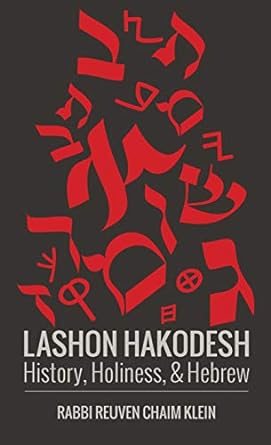Part II
Last week, we read Parashat Parah, the third of four special Torah portions read during the Purim-Pesach season. Because that special reading outlines the laws of the parah adumah (literally the “red heifer”), we began our three-part exploration of Hebrew and Aramaic words associated with the color “red” with the word adom and its etymological cognates. In this second installment, we will examine other terms for “red” in Hebrew.
As part of the process of preparing a parah adumah to be used in purifying people, another red ingredient is needed—shni tola’at (Num. 19:6). That term refers to a wool cloth dyed red that is used as part of the rituals used in preparing a parah adumah. That same ingredient is also crucial to the ceremony for purifying a person or house afflicted by tzara’at (Lev. 14:4; 14:6; 14:49; 14:51-14:52). The same thing is also sometimes referred to as tola’at shani (Ex. 25:4; 26:1; 26:31; 26:26; 27:16; 28:5; 28:8; 28:15; 28:33; 35:6; 35:23; 35:25; 36:8; 36:35; 36:37; 38:18; 39:1–2, 39:5; 39:8; 39:24; 39:29; Num. 4:8), tola’at hashani (Ex. 28:5; 35:25; 35:35; 38:23; 39:3), or even just shani (Gen. 38:30; Josh. 2:18; 2:21; II Sam. 1:24; Isa. 1:18; Jer. 4:30; Song of Songs 4:3; Prov. 31:21) or just tola (Isa. 1:18, as well as Lam. 4:5 according to Ibn Ezra and Mahari Kara).
Regardless of the exact terminology used, the sort of “red” denoted by these phrases is understood to refer specifically to “crimson red”—that is, a deep, rich red with a slight bluish or purplish undertone. This understanding is made explicit by such Medieval exegetes as Rabbi Saadia Gaon, Ibn Ezra, Rabbi Avraham Maimuni (in their respective commentaries to Ex. 25:4), Raavad and Rash M’Shantz (in their commentaries to Torat Kohanim, Parashat Metzora), Radak (in his Sefer HaShorashim), and Meiri (to Prov. 32:21).
This type of red color derives from a dye extracted from a certain type of worm, as the Hebrew word for “worm” is tola’at (see Jerusalemic Talmud Kilayim 9:1 and Malbim to Isa. 1:18). Similarly, pseudo-Rashi (II Chron. 2:6) writes that the word carmil (and carmel according to Ibn Janach and Radak’s Sefer HaShorashim) refers to the same red-colored cloth as tola’at shani (i.e., “crimson”), and Rabbi Tedeschi-Ashkenazi sees this word as related to rimah, which is a type of worm just like tola’at.
In fact, the English word crimson derives from the Proto-Indo-European root kwrmi-, which means “worm” or “mite.” It comes to English by way of the Old Spanish cremesin, which itself comes from the Arabic qirmiz and ultimately from the Sanskrit krimija (“produced by a worm”), referring to a red dye made from scale insects (like kermes and cochineal). Even though Arabic is a Semitic language and Sanskrit is an Indo-European language, it seems that Arabic actually borrowed qirmiz from Farsi (gharmaz/germez), which is an Indo-European language like Sanskrit. Other related English words include vermilion (which refers to a bright, vivid red with a slight orange tint), which derives from the Latin vermiculus (“little worm,” referring to the red dye made from the kermes insect) and carmine (a purplish-red color).
I used to think that the name of the world-famous Ghermezian family hinted to German-Ashkenazi origins from the town of Worms (sometimes spelled Germaiza). However, in light of what we’ve learned above, it makes more sense that this Persian family’s surname comes from the Iranian word for “red.” Although the truth is, that word itself is seemingly connected to “worms,” just not the German town with that name.
If we focus on the word shani/shni, we might notice that it derives from the Hebrew root shin-nun-(yod), which primarily gives us the word sheini (“two”). But what does shani as a “red dye” have to do with the number two? The Torah relates that when Tamar was giving birth to twins, the midwife tied a chut shani (“red string”) on the hand of the baby whose hand exited the womb first, but then the other twin ended up being born first, and the boy with the red string came out second (Gen. 38:28–38:30). Rabbi Yaakov Hibbert of Manchester conjectures based on the wording of the Ohr HaChaim (to Gen. 38:28) that perhaps crimson red relates to the number “two” because it was a string colored in that very color that was used to mark Zerach as the second son born to Judah and Tamar. I looked more into this question and found a different explanation that is presented both in Rabbi Moshe Tedeschi-Ashkenazi’s Otzar Nirdafim and Rabbi Shlomo Pappenheim’s Cheshek Shlomo. Those two rabbinic philologists explain that clothes dyed with this sort of coloring were often dyed twice in order to make sure that the color would stick more strongly, hence the connection between shani and sheini. [For more about the biliteral root shin-nun, see “The Old Man and the See” (Nov. 2019) and “Showing Teeth” (April 2023).
To be continued…
This article has been excerpted from its original. To read the full article, visit 5tjt.com/pekudai-seeing-red-part-2-3/
Rabbi Reuven Chaim Klein is an author and freelance researcher based in Beitar Illit. He studied in Yeshiva Gedolah of Los Angeles, the Mir Yeshiva in Jerusalem, and Beth Medrash Govoha of America in Lakewood, and received semichah from leading rabbis. He also holds an MA in Jewish Education from Middlesex University/London School of Jewish Studies. Rabbi Klein authored two popular books that were published by Mosaica Press, as well as countless scholarly articles published in various venues. His articles on Hebrew synonyms are commissioned by Yeshivas Ohr Somayach in Jerusalem and have appeared on their website since 2016.












